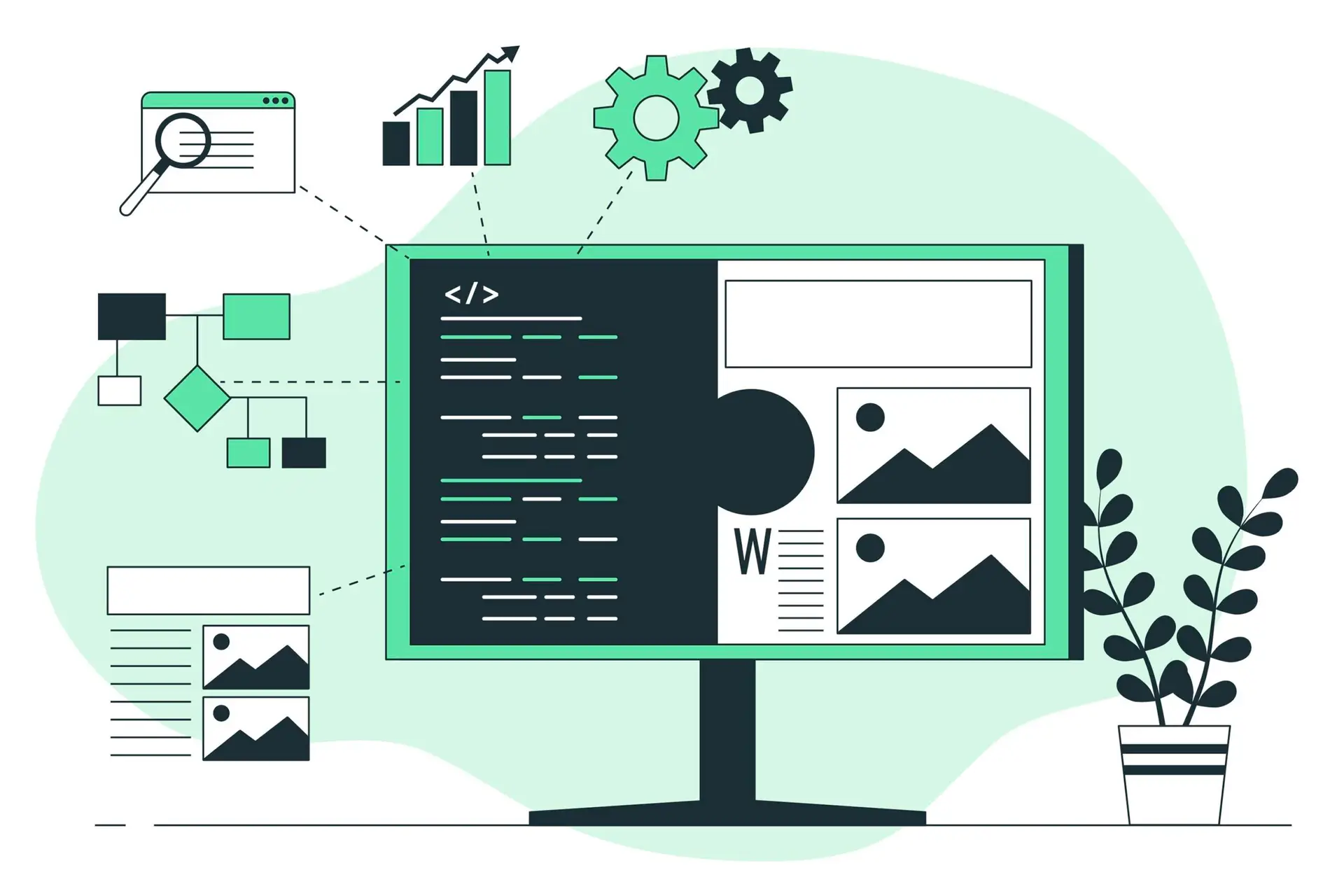In our previous articles, we explored the Software Testing Life Cycle (STLC) and the crucial role of Test Planning in laying the foundation for effective testing. Now, let’s delve deeper into two pivotal phases within the STLC: Test Analysis and Design. These phases are the bridge between understanding the software requirements and creating the actual test cases that will be executed.
What is Test Analysis and Design?
Test analysis and design are foundational phases within the Software Testing Life Cycle (STLC).
Test Analysis involves a thorough examination of the software requirements, identifying testable aspects, and pinpointing potential gaps or ambiguities. It’s about understanding what needs to be tested and why. This phase acts as a bridge between requirements engineering and test case development. It involves activities like:
Requirements Review: Carefully analyzing functional and non-functional requirements for completeness, clarity, consistency, and feasibility.
Risk Identification: Identifying potential risks associated with the software, such as security vulnerabilities, performance issues, and usability problems.
Testability Analysis: Evaluating how easily the software can be tested. This involves identifying any factors that might hinder the testing process, such as limited access to certain components or the lack of suitable test environments.
Test design focuses on translating the findings from test analysis into concrete test cases or test scenarios. This involves defining test objectives, creating test data, and determining the expected outcomes of each test. Key activities in test design include:
Test Case Design: Creating detailed test cases that outline the steps to be performed, the expected results, and the test data to be used.
Test Data Preparation: Preparing the necessary data for test execution, including input data, expected output data, and any other relevant data.
Test Scripting: Developing automated test scripts for those tests that will be automated.
Test Environment Setup: Ensuring that the necessary hardware, software, and network infrastructure are available for test execution.
Together, these phases ensure that testing efforts are aligned with the project’s goals, and nothing critical is overlooked.

Why Are Test Analysis and Design Important?
Early Defect Detection:
By carefully analyzing requirements during the analysis phase, potential issues or ambiguities can be identified early in the development lifecycle.
Addressing these issues early on significantly reduces the cost and effort associated with fixing defects later in the process.
Optimized Test Coverage:
Effective test analysis helps ensure that all critical areas of the application are covered by tests.
This minimizes the risk of untested areas and increases the likelihood of identifying critical defects.
Improved Resource Utilization:
By focusing testing efforts on high-priority and high-risk areas, test analysis and design help optimize the allocation of testing resources.
This ensures that testing efforts are focused where they are most valuable.
Better Communication:
The process of analyzing requirements and designing tests fosters better communication and collaboration between QA teams, developers, and stakeholders.
It ensures that everyone involved has a shared understanding of the testing objectives and approach.
Support for Test Automation:
Well-structured test design, particularly through the use of techniques like equivalence partitioning and boundary value analysis, makes it easier to implement and maintain automated tests.
This can significantly improve testing efficiency and reduce the time and effort required for repetitive testing tasks.
Types of Test Analysis Techniques
Requirements Analysis: Analyzing functional and non-functional requirements for completeness, clarity, and consistency. This involves identifying any ambiguities, contradictions, or missing information that could impact the testing process.
Risk-Based Analysis: Prioritizing testing areas based on the associated risks. This involves identifying high-risk areas of the application and focusing testing efforts on those areas to minimize potential negative impacts.
Static Analysis: Reviewing documentation, code, or design artifacts without actually executing the application. This includes techniques like code reviews, design inspections, and walkthroughs to identify potential issues early in the development process.
Use Case Analysis: Deriving tests based on user interactions and workflows. This involves analyzing how users will interact with the application and designing tests that cover all relevant scenarios.
Defect Analysis: Examining past defects to identify recurring patterns and trends. This information can be used to improve the testing process and prevent similar defects from occurring in the future.
Types of Test Design Techniques
Black Box Testing Techniques:
Equivalence Partitioning (EP): Divides input data into valid and invalid partitions to minimize the number of test cases while ensuring adequate coverage. For example, if a field accepts numbers between 1 and 100, you would create partitions for valid numbers (e.g., 1-100), numbers less than 1, and numbers greater than 100.
Boundary Value Analysis (BVA): Focuses on testing values at the boundaries of input domains. For example, if a field accepts numbers between 1 and 100, you would test values like 1, 100, 0, 101, and values slightly above and below these boundaries.
Decision Table Testing: Ensures coverage for all possible combinations of inputs and their corresponding outputs, especially useful for complex business rules.
State Transition Testing: Focuses on testing the behavior of the system as it transitions between different states.
Use Case Testing: Derives test cases based on user interactions and workflows described in use case scenarios.
White Box Testing Techniques:
Statement Coverage: Aims to execute every line of code at least once.
Branch Coverage: Ensures that all possible branches or decision points within the code are tested.
Path Coverage: Aims to execute all possible paths through the code.
Data Flow Coverage: Focuses on testing the flow of data through the program.
Experience-Based Techniques:
Error Guessing: Leverages the tester’s intuition, experience, and knowledge of common defects to identify potential problem areas.
Exploratory Testing: Combines test design and execution without pre-defined test cases. Testers interact with the software, learn about its behavior, and design tests on the fly based on their understanding.
Model-Based Testing:
Uses formal models, such as state machines or finite state machines, to represent the behavior of the system. Tests are then generated automatically based on these models.
Common Pitfalls in Test Analysis and Design and How to Avoid Them
| Challenges | Description | Solution |
|---|---|---|
| Ambiguous Requirements | If requirements are unclear, it becomes difficult to design effective tests. | Conduct thorough requirements reviews and clarify any ambiguities with stakeholders early in the development process. |
| Incomplete Test Coverage | Failing to cover all critical areas of the application can lead to undetected defects. | Use traceability matrices to map tests to requirements and ensure that all requirements are adequately covered. |
| Overlooking Non-Functional Requirements | Focusing solely on functional requirements can lead to neglecting important aspects like performance, security, and usability. | Include non-functional requirements in the test plan and design tests to evaluate these aspects. |
| Poor Communication | Lack of communication between QA, development, and business teams can lead to misunderstandings and inefficiencies in the testing process. | Foster open communication channels and regular meetings between stakeholders. Utilize collaboration tools and shared documentation to ensure everyone is on the same page. |
| Neglecting Automation Feasibility | Failing to consider automation opportunities during the test design phase can limit the effectiveness of automation efforts. | Identify potential areas for test automation during the test design phase and design test cases with automation in mind. |
| Lack of Documentation | Poorly documented test cases and analysis can lead to confusion and difficulty in maintaining and updating tests. | Maintain clear and concise documentation for all test artifacts, including test plans, test cases, and test results. |
Get your Free STLC Test Analysis & Design Checklist and start building better software today!
"Adopting Shift Left is more than a process change—it's a mindset shift that turns every challenge into an opportunity to build quality from the ground up. Embrace collaboration, bridge skill gaps, and choose the right tools to turn resistance into resilience."
Rishi Gaurav, Vice President
Conclusion: The Role of Test Analysis and Design in Software Quality Assurance
Test Analysis and Design are indispensable for delivering high-quality software. By employing structured techniques and avoiding common pitfalls, QA teams can significantly improve the effectiveness and efficiency of testing efforts. These phases not only strengthen the testing process but also ensure that the end product meets the desired quality standards and customer expectations.
Remember, a robust test analysis and design strategy is a cornerstone of a successful Software Testing Life Cycle and a critical contributor to overall software quality.
This article provides a comprehensive overview of Test Analysis and Design. If you have any questions or would like to explore specific aspects in more detail, please leave a comment below.
Related Frequently Asked Questions
Q. What are the different types of testing?
There are various types of software testing, including functional testing, non-functional testing, and maintenance testing.
- Functional testing verifies that the software functions as per the specified requirements. This includes unit testing, integration testing, system testing, and acceptance testing.
- Non-functional testing evaluates aspects like performance, security, usability, and compatibility. This includes performance testing, security testing, usability testing, compatibility testing, load testing, stress testing, and more.
- Maintenance testing is performed after the software is deployed to ensure its continued functionality and reliability. This includes regression testing, smoke testing, and sanity testing.
Q. What are the best practices for software testing?
Some best practices for software testing include:
- Early involvement of testers: Involve testers early in the development process to identify and address potential issues proactively.
- Test automation: Automate repetitive tests to improve efficiency and reduce the risk of human error.
- Risk-based testing: Prioritize testing efforts based on the identified risks associated with the software.
- Continuous testing: Integrate testing activities throughout the entire development lifecycle.
- Use of appropriate tools: Utilize testing tools to support the testing process and improve efficiency.
- Regularly review and improve the testing process: Continuously evaluate the testing process and identify areas for improvement.
Q. How can I improve my software testing skills?
To improve your software testing skills, you can:
- Gain relevant certifications: Obtain certifications such as ISTQB (International Software Testing Qualifications Board) to demonstrate your expertise.
- Participate in online courses and tutorials: Learn from online resources and tutorials to enhance your knowledge and skills.
- Practice regularly: Practice testing different types of software applications to gain hands-on experience.
- Stay updated with the latest trends and technologies: Keep up-to-date with the latest advancements in software testing tools, techniques, and methodologies.
- Join a testing community: Connect with other testers and learn from their experiences.
- Read industry publications and blogs: Stay informed about the latest trends, best practices, and challenges in the field of software testing.
Q. What are the challenges faced during STLC?
Some common challenges faced during STLC include:
- Lack of clear requirements: Ambiguous or changing requirements can make it difficult to design and execute effective tests.
- Limited Time: In fast-paced development environments, there may be pressure to release software quickly, which can lead to compromises in the testing process.
- Limited Resources: Adequate resources, including budget, personnel, and tools, are essential for effective test planning and execution.
- Skill Gap: Lack of skilled testing professionals can hinder the effective implementation of the test plan.
- Resistance to Change: Introducing a structured testing process like the STLC can sometimes face resistance from team members who are accustomed to working in a less formal manner.
- Changing Technologies: The rapid evolution of technologies requires testers to continuously adapt their skills and knowledge.
By addressing these challenges and adhering to best practices, organizations can effectively implement the STLC and ensure the delivery of high-quality software products.






